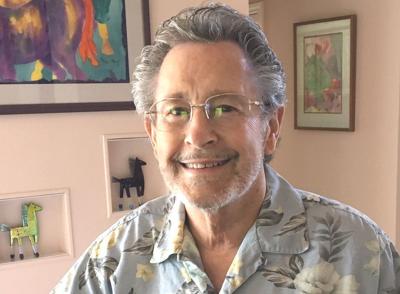Are Journalists Fully Prepared for the New Age of Protest? May 12, 2021
Posted by Mia Moody-Ramirez in : Uncategorized , trackback
Editorial
At 6:05 p.m. on Thursday, April 4, 1968, Martin Luther King was assassinated in Memphis, Tennessee.
As darkness fell and anger swelled, all hell was about to break loose across the nation. Why would it be any different in Houston, then the seventh largest U.S. city?
I had joined United Press International right out of Baylor a mere 10 weeks earlier and was now entering the third hour of my 4 p.m.-to-midnight shift. Whether it was a “Bulletin” or a “Flash,” five bells or 10 bells on the teletype machine that historic evening, I was smart enough to call my boss to strategize coverage. Fortunately, Bureau Chief Darrell Mack advised the newbie to “Stay put!” in our Houston Chronicle building office while he headed into the potentially volatile Fifth Ward with two friendly reporters from African American weeklies.
Whether it is karma, pure luck or coincidence, in my 50-plus years as a reporter, editor, PR-marketing. consultant, the most memorable protest I ever covered (or arranged) was a bra burning on South Main in Houston about 1970.
The severe maltreatment of journalists by law enforcement from coast to coast this past year raises the question of adequate training for frontline reporters. Not wartime correspondents, but domestic reporters covering civil unrest and protests. This link will give you a snapshot of the harshness – pummeling, gassing, arrests, cavity search, booking, etc. https://www.cnn.com/2021/04/18/us/daunte-wright-minnesota-shooting-sunday/index.html
Such confrontations between law enforcement and the media, including attacks on reporters by the protesters and political convention or rally attendees, is unconscionable and troubling and possibly avoidable. Surely this is a teachable moment for both law enforcement groups, newsrooms and journalism schools around the nation as the reporting profession works to regain its respect, as well as reinforce its integrity and its necessity in a free society.
Four years of constant verbal attacks by politicians and social media influencers has ingrained the “media as enemy” of the people — the same citizens who seem to forget that the exposure of wrongdoing and corruption by badge holders leads to change.
A letter and an apology are totally inadequate. In Minnesota, there was humiliation, injury, pain, suffering, interruption of productivity, racial profiling/bias and invasion of privacy! Suspensions and firings of officers are in order as well as their arrests for assaults. The pursuit of monetary damages is justifiable.
The employers of assaulted journalists should not merely stick a “were-gritty” publicity feather in their pointy hats in the safety of their executive suites while the reporter/photographer works through personal recovery. Forceful litigation gets the attention of city leaders, police administrators and taxpayers who must foot the bill with hard dollars that could have been applied to community relations/policing and re-training. A painful le$$on is warranted, overdue and should be widely pursued to curtail such abuse.
Is it necessary to remind the heads of the news organizations that constitutional rights were violated? Journalists in the field, clearly distinguishable, with credentials, declaring their affiliation and purpose and not interfering otherwise in the protest cannot and should not be the target of blue aggression, or any other color of law enforcement uniform. That incident — and all the other preceding assaults on journalists covering rightful assemblies, peaceful OR violent protests, must be prosecuted.
Both law enforcement and public reaction to bona fide media and their coverage should be addressed by the employers with on-the-job training to prevent injuries and litigation. News organizations and journalism schools should consider adequate training on ways to protect those dedicated men and women deployed to events that can turn violent, even deadly, during a routine assignment.
Should such reporters be equipped with eye wash, body armor, helmets, speed dial connections to lawyers or merely instructed on techniques for building relationships with local law enforcement and military police well before critical events unfold? Do frontline reporters deserve hazard pay?
Perhaps, the nation’s schools of journalism should consider an eye-opening course on preparing “frontline” reporters on how to work effectively in a hot zone. This would not be intended to alarm future reporters but to expose the realities of being sent to dangerous events on short notice.
It might include:
Advance introductions and friendly meetings with upper, middle and line law enforcement officials.
Obtaining or confirming proper press credentials.
How to firmly assert First Amendment, Open Meetings and Open Records rights.
Appropriate protective clothing and gear.
When to carry and display conspicuous I.D.
How/when to work from the edge of or the center of an unpredictable event.
Methods to avoid serious injury if attacked.
When to surrender equipment.
The fastest way to get first aid, legal assistance or distance from attackers.
Discussion of the latent physical and mental effects of covering such intense or violent headline-making events.
“Combat reporting” is no longer limited to revolutions, war zones and military actions. It has essentially come to the streets of our own nation. Being “on the scene” — planned or spontaneous — is not a Hemingwayesque adventure fraught with excitement, adrenaline and glory.
Covering protests, mob violence and even political gatherings requires a clear mindset, personal conviction and strategic and extensive preparation in these tumultuous times. No more, “Hey, Fred!” or “Hey, Louise! It’s your turn to hit the streets and get the story!”
Preston F. Kirk, APR
Baylor ‘68
Comments»
no comments yet - be the first?